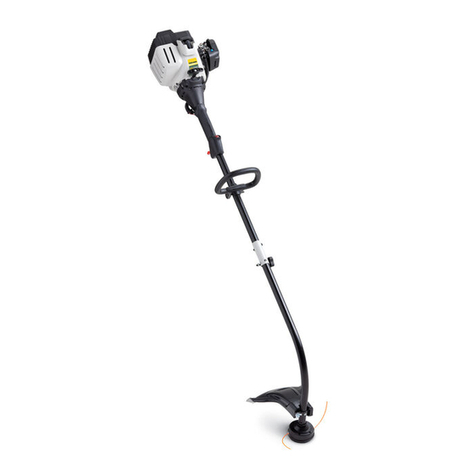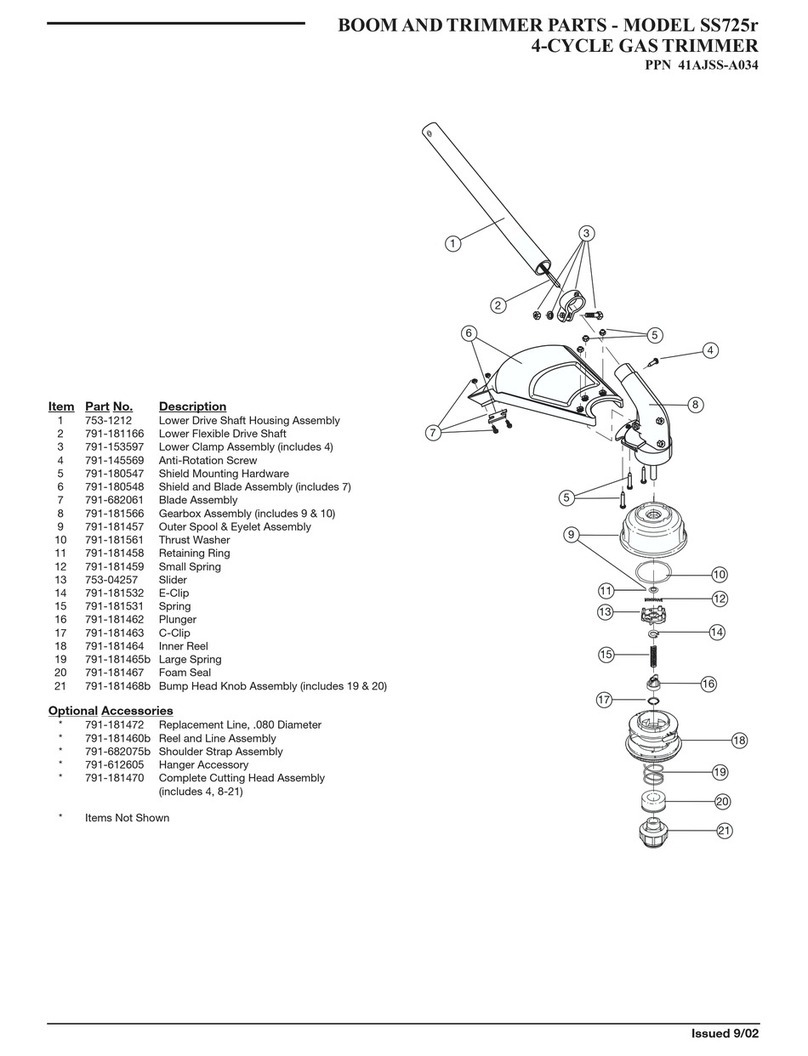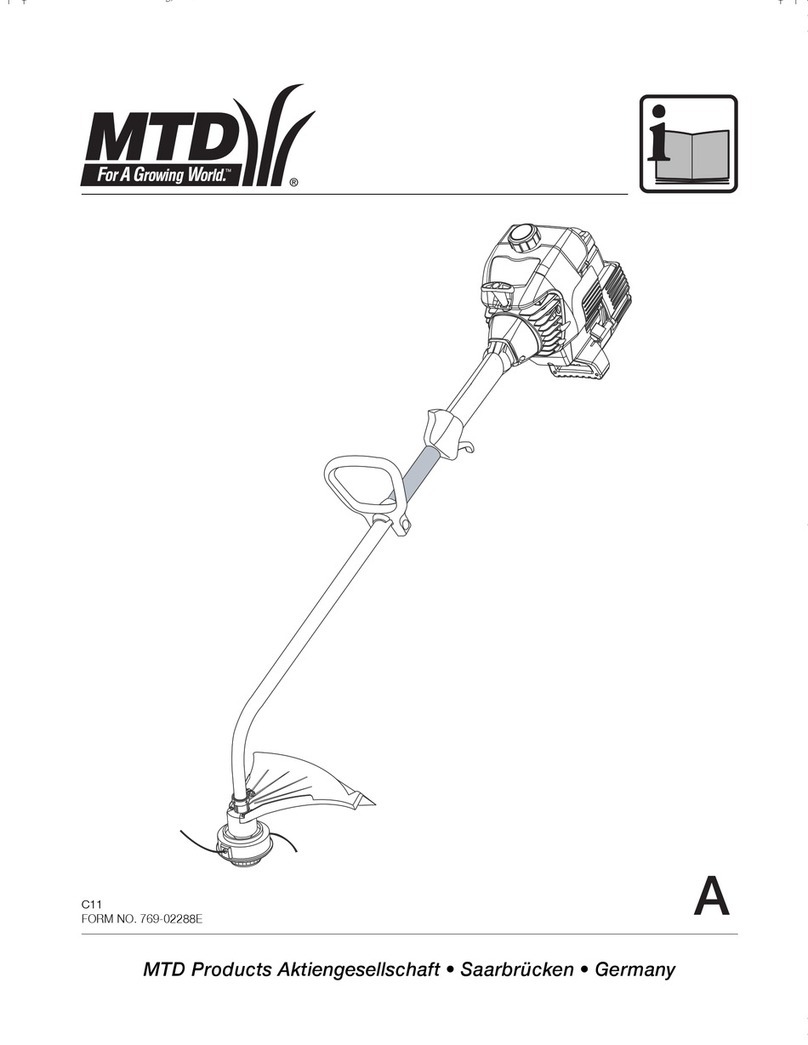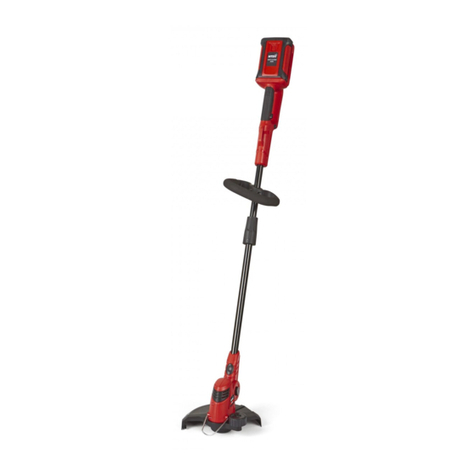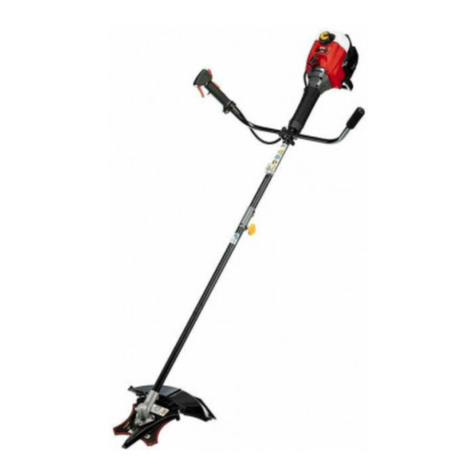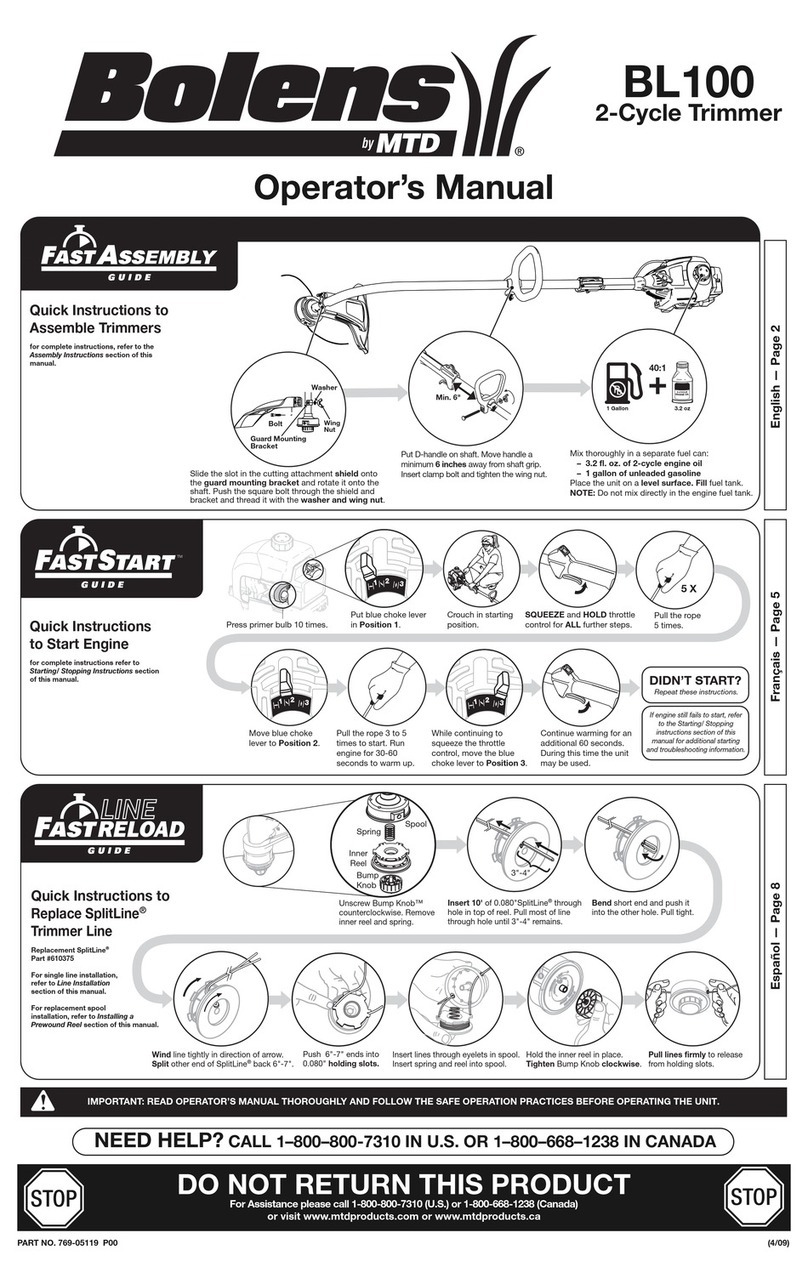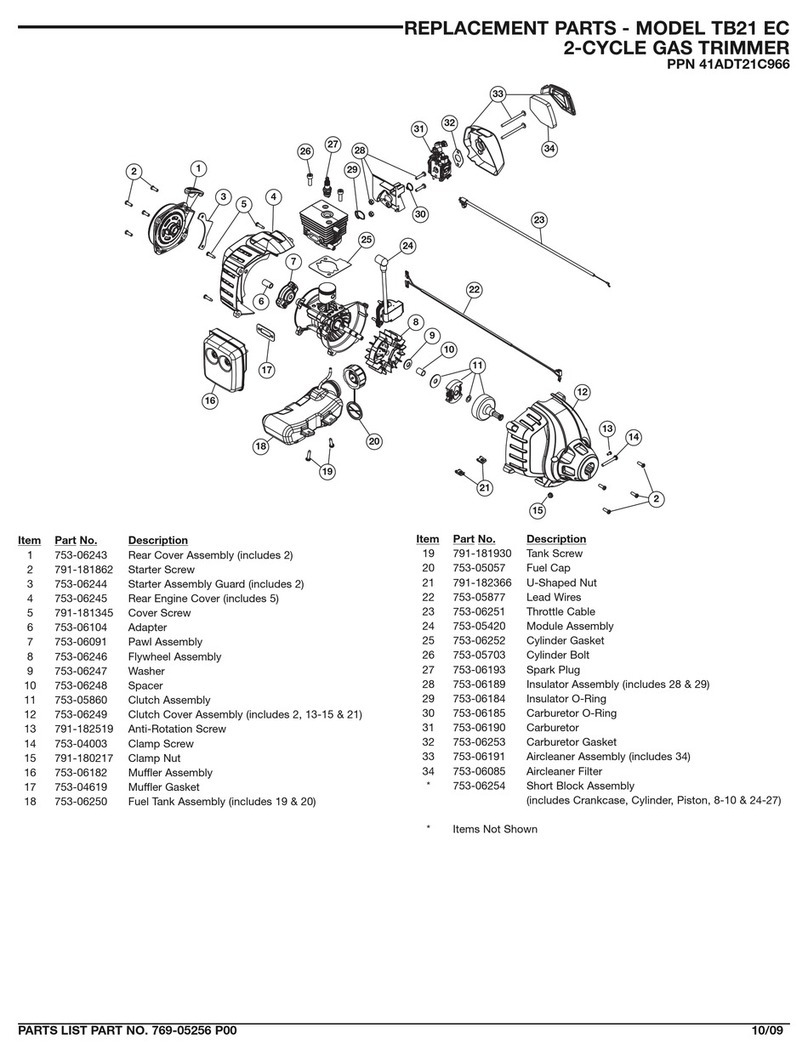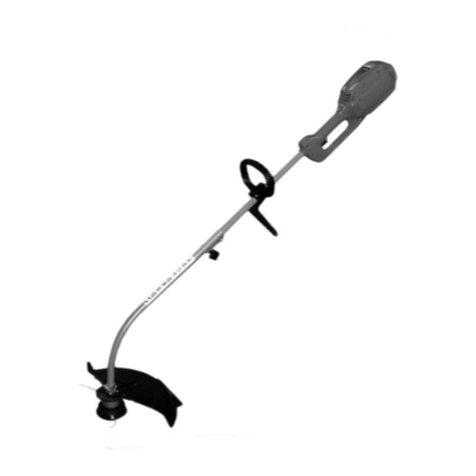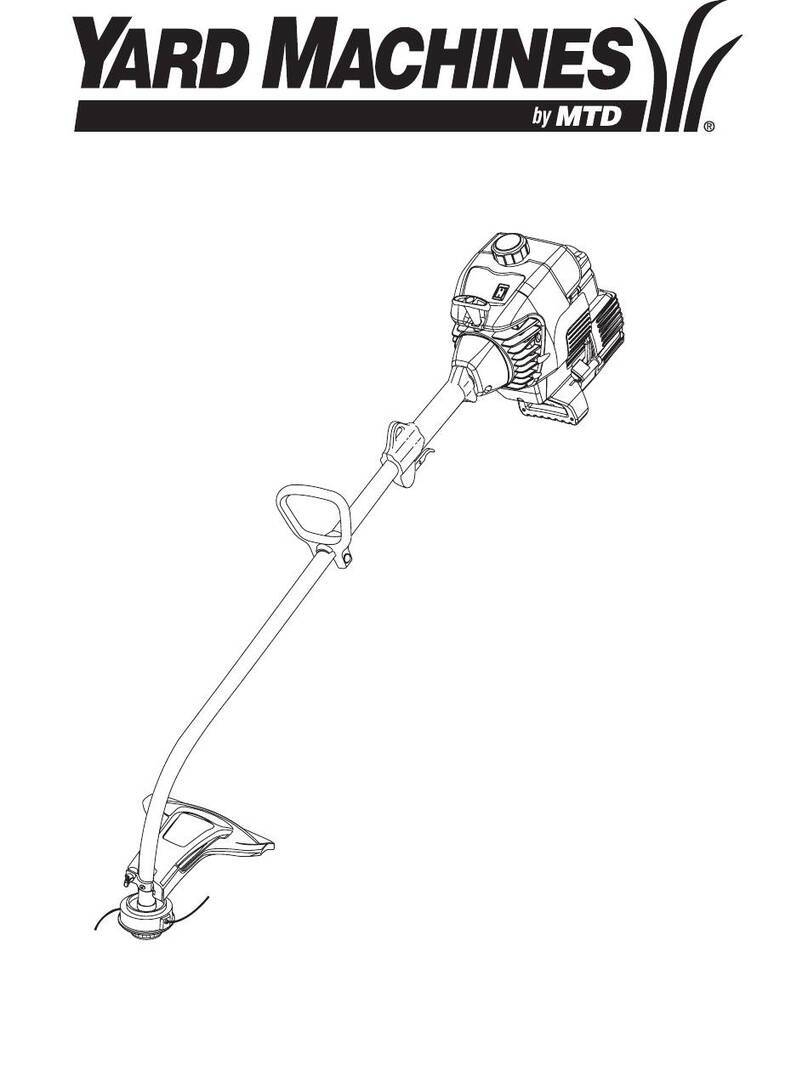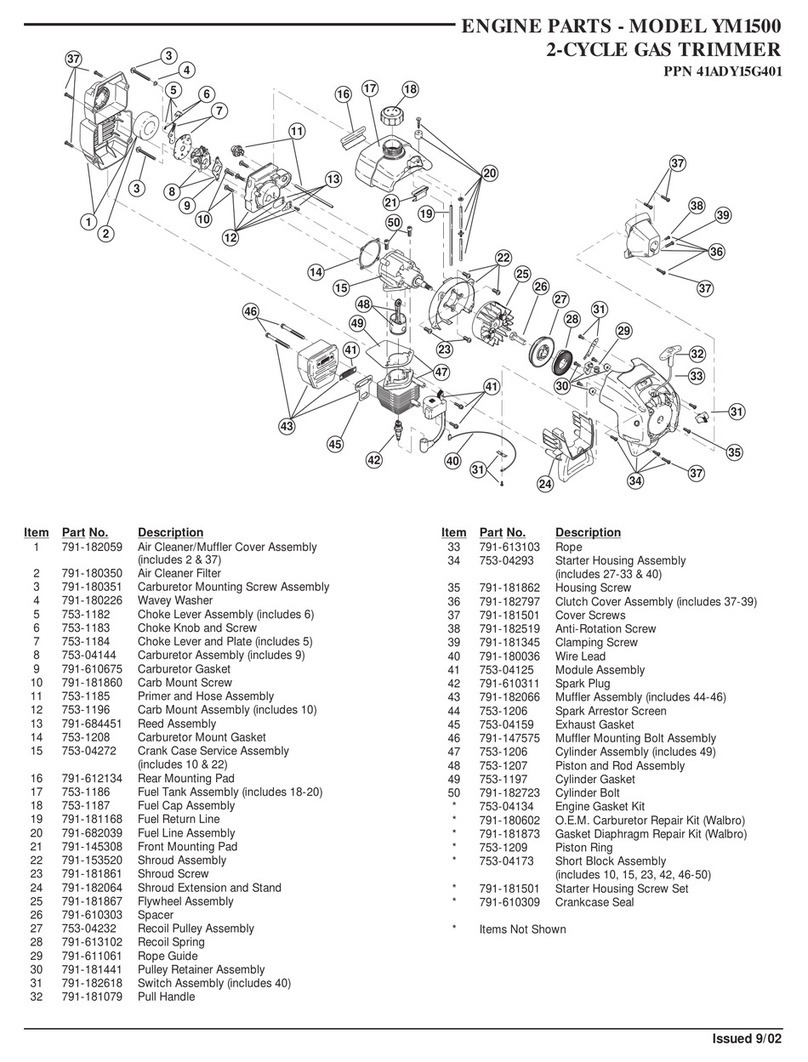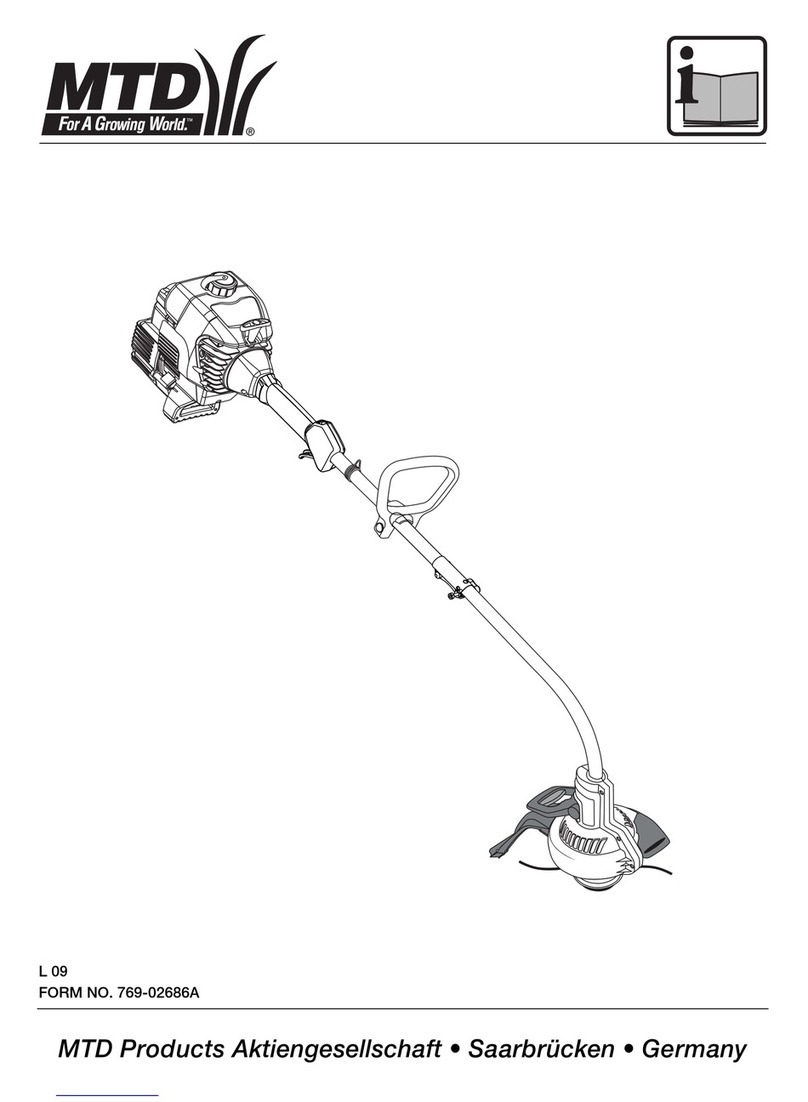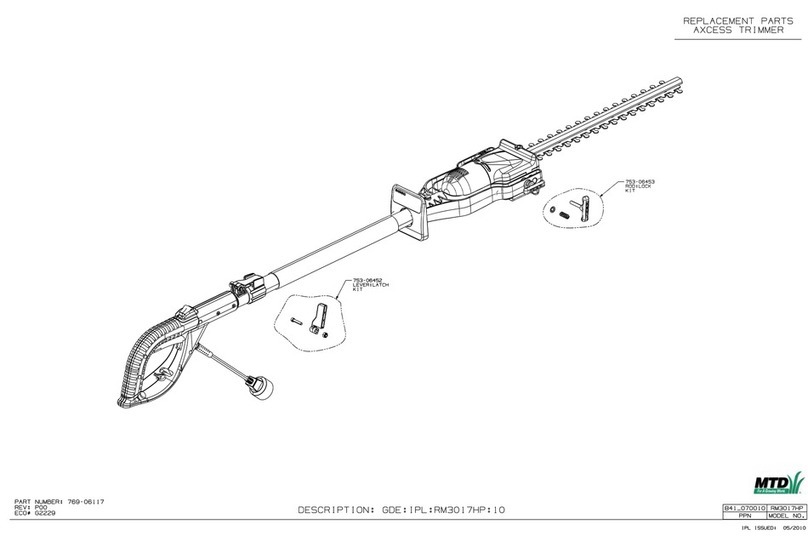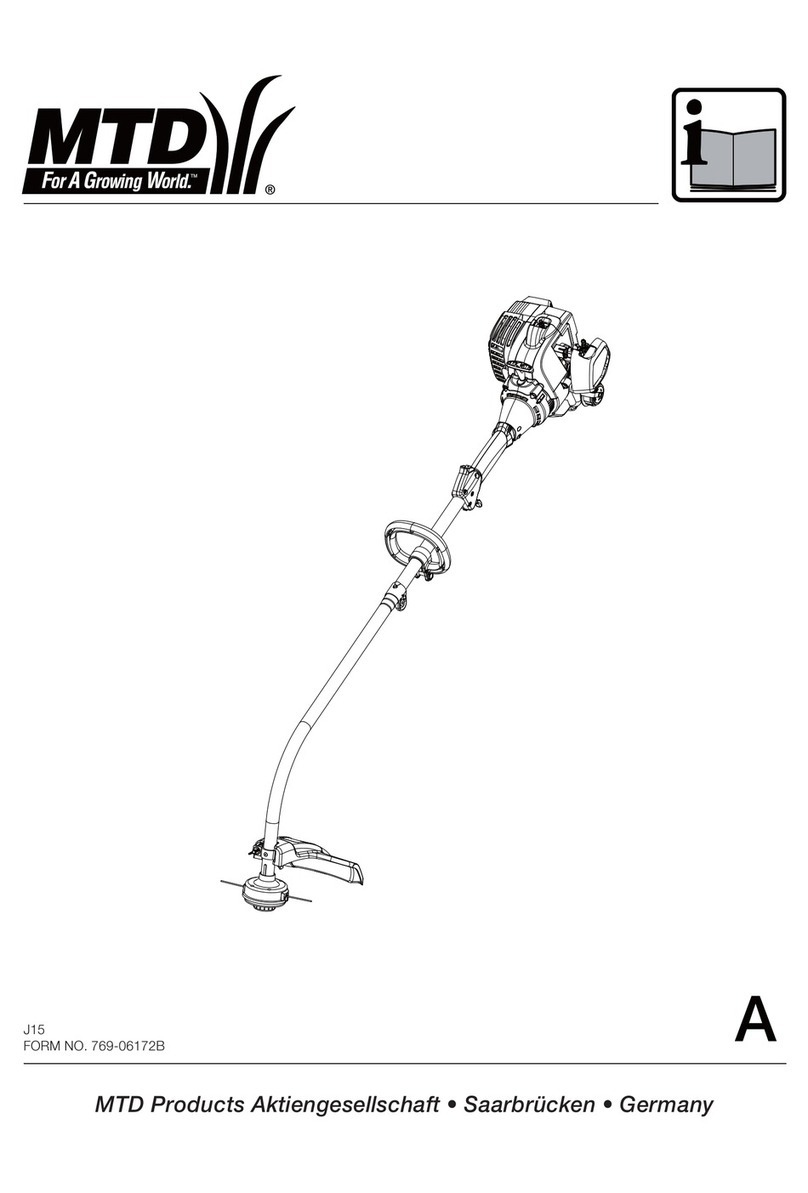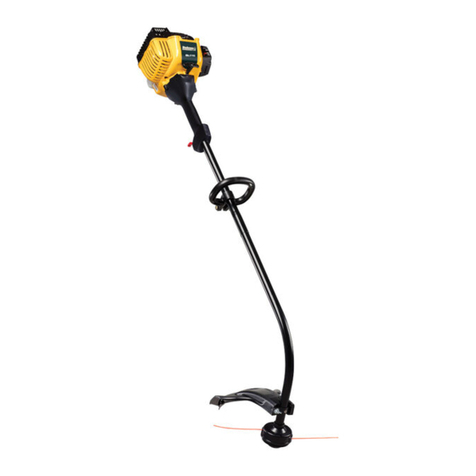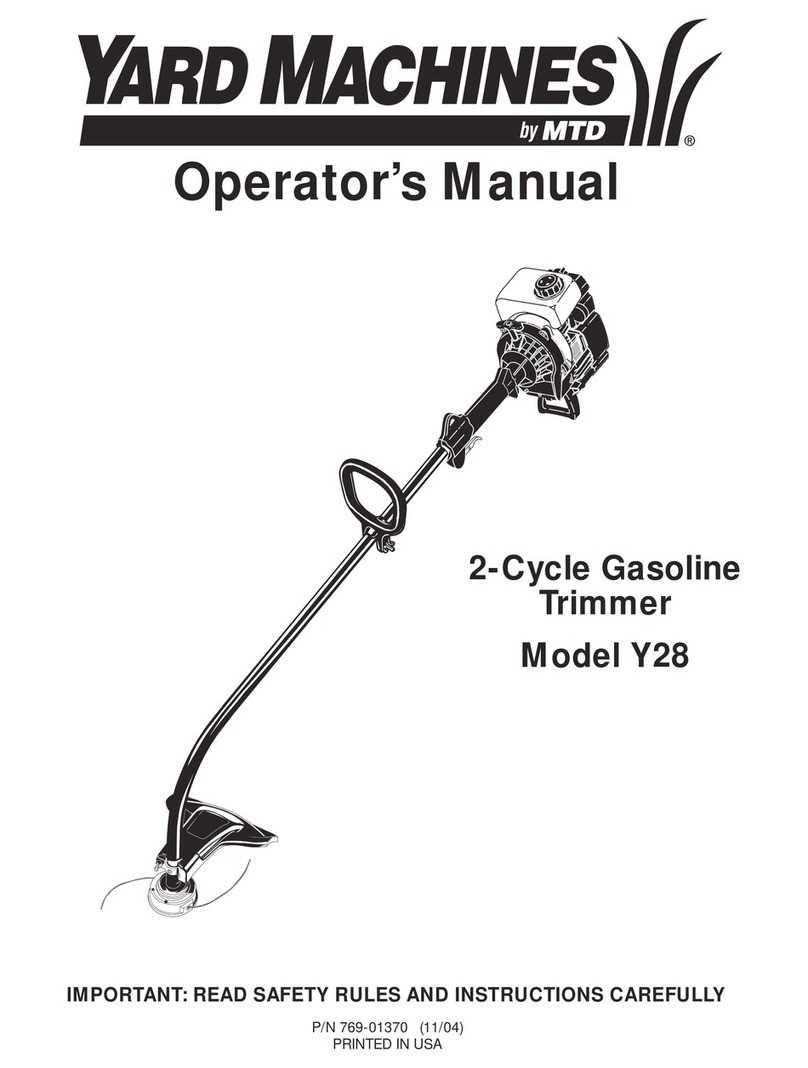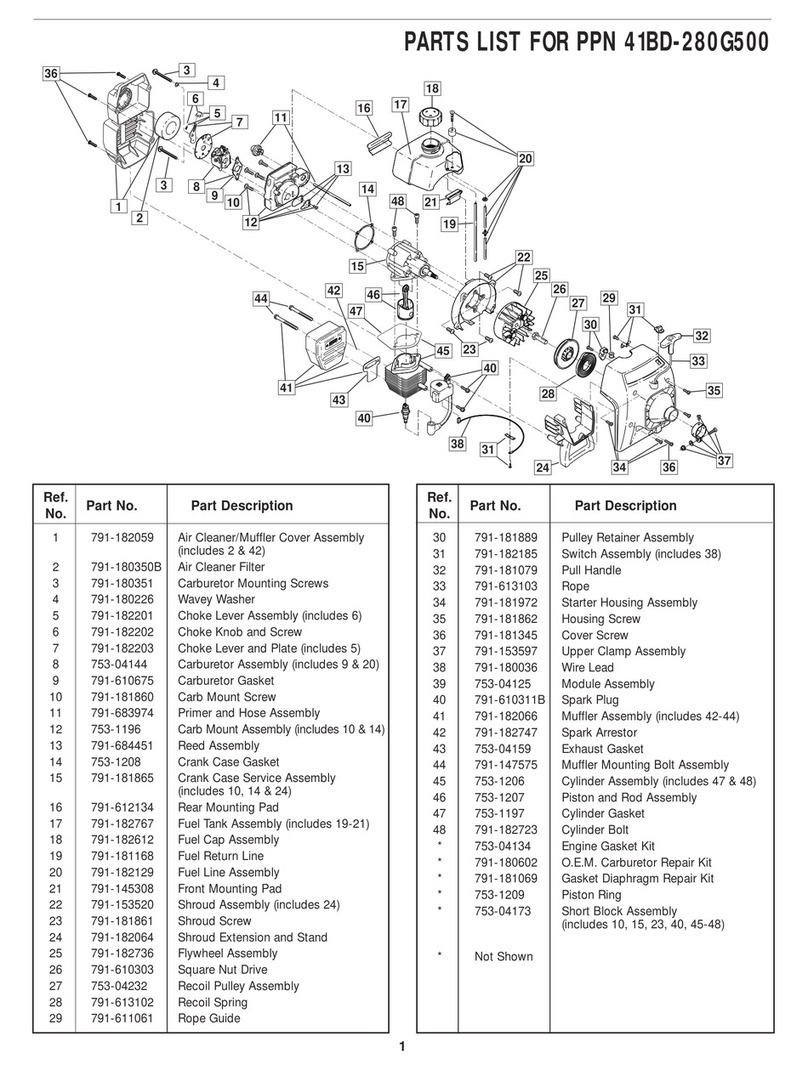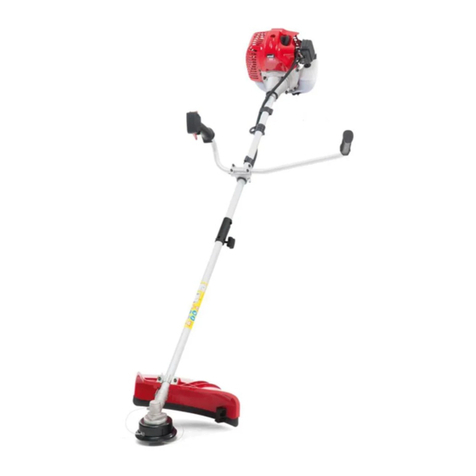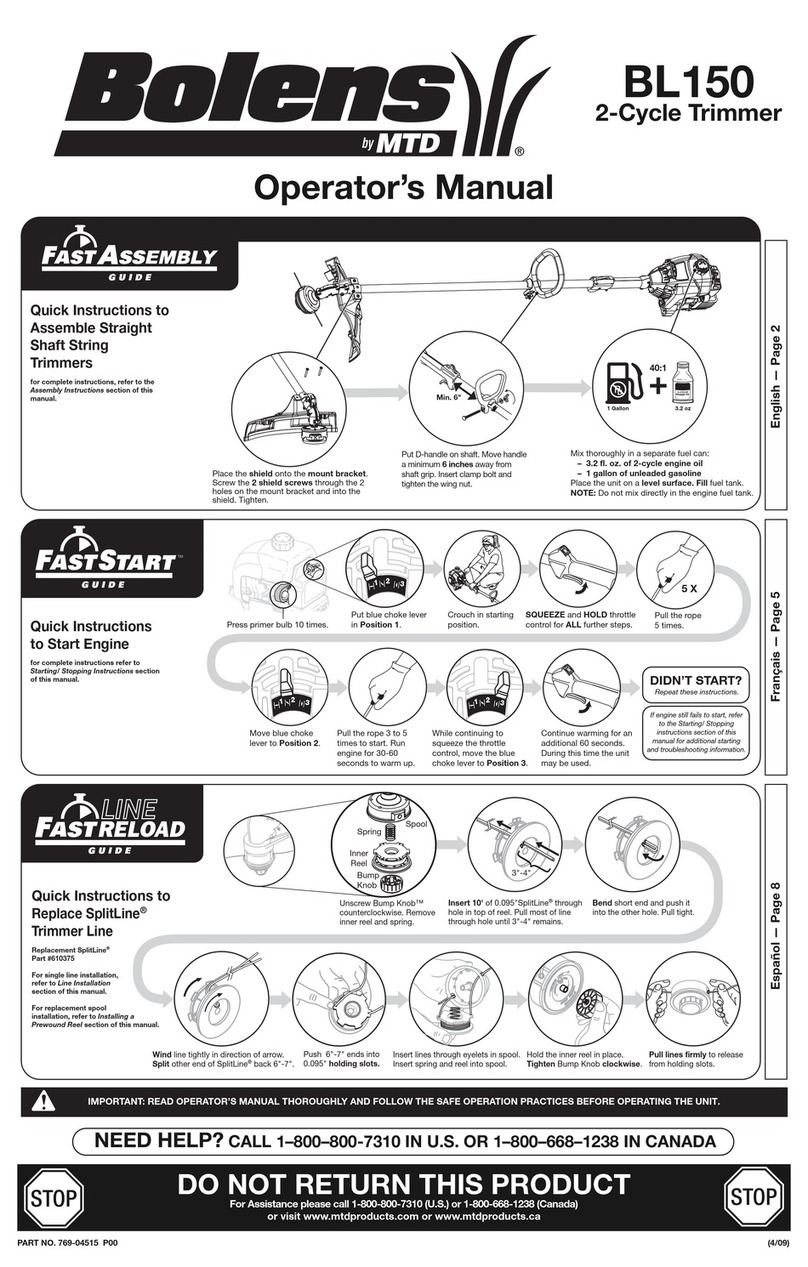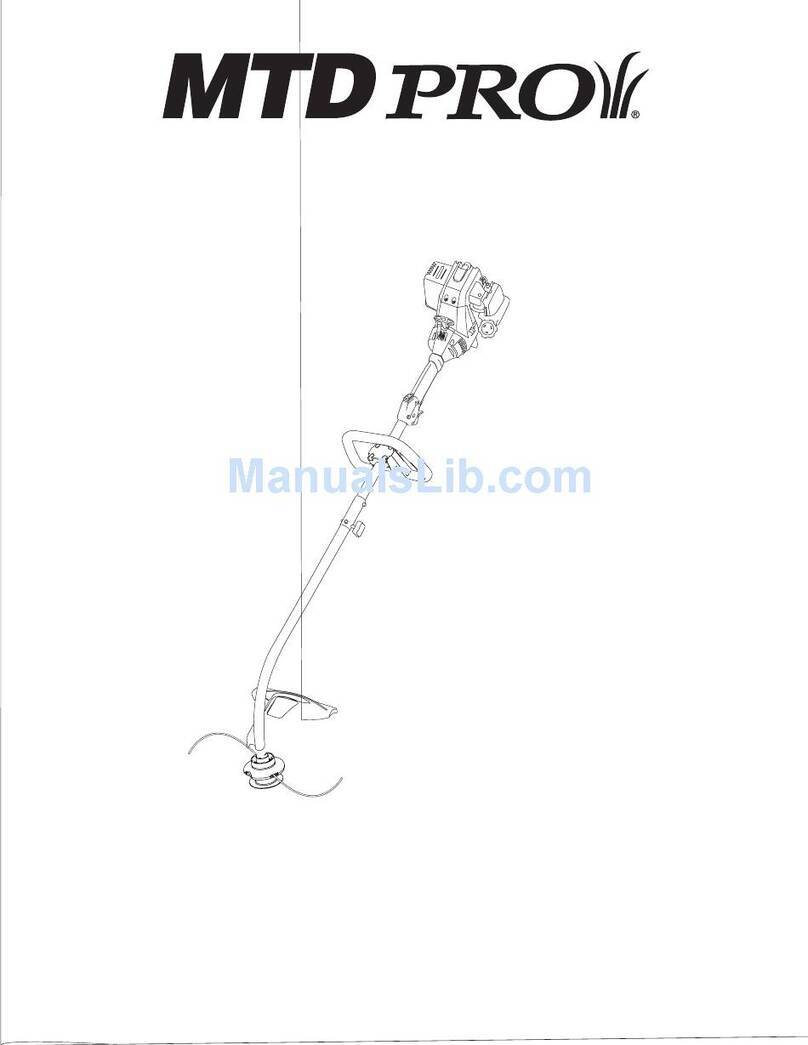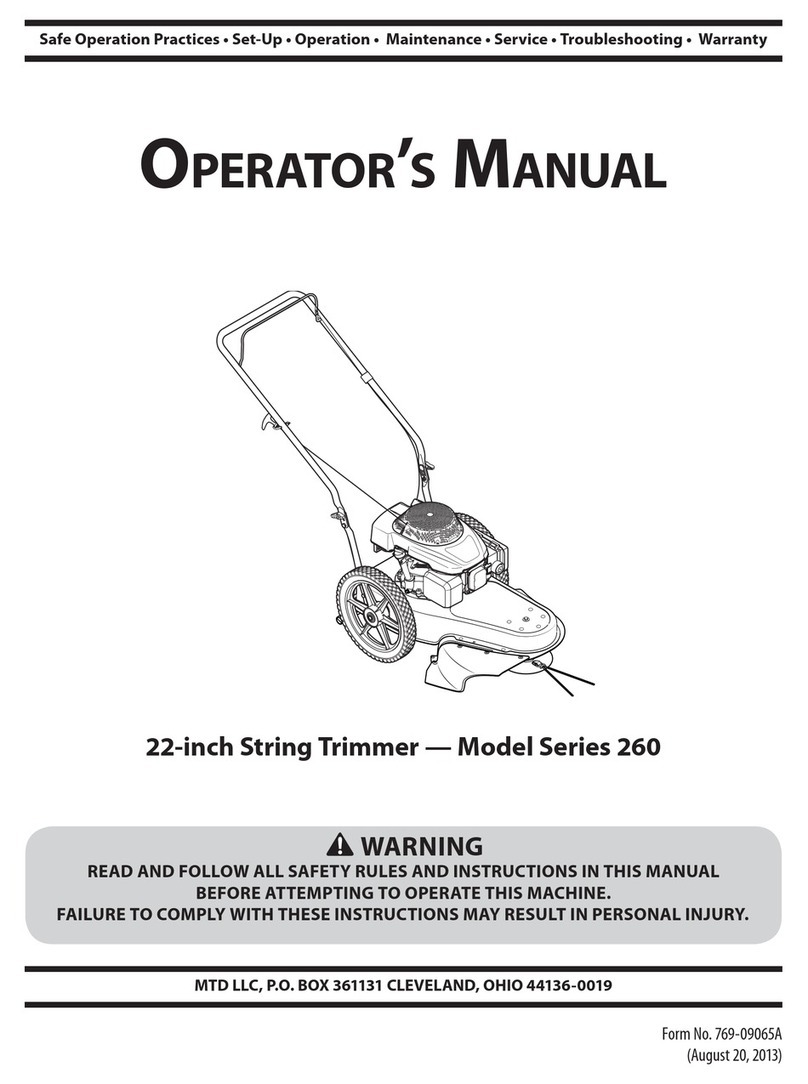
4
WARTUNG Luftlter Dieser sollte entsprechend der beiliegenden Wartungsanweisung für den Motor gereinigt werden. (spätestens alle 20
Arbeitsstunden).
FAHRGETRIEBE Ölsorte: Getriebeöl SAE 80 Ölstand vor dem Starten überprüfen. Man prüft den Ölstand durch den Abschrauben des
seitlichen Getriebeverschlusses. Getriebeöl - Wechsel alle 60 Arbeitsstunden. Die notwendige Ölmenge ist von ca. 0,18 Liter.
SCHMIERUNG (Abb. 12) Antrieb für Mähbalken alle 8 Arbeitsstunden an Position (1) und (2) mit Fett abschmieren. Wichtig! Messerbalken
und alle beweglichen Teile nach jedem Gebrauch reinigen und schmieren.
WARTUNG FÜR MÄHBALKEN Der Mähbalken zählt zu den am stärksten beanspruchten Teilen. Es ist deshalb selbstverständlich, daß er mit
besonderer Sorgfalt gewartet und eingestellt werden muß. Es empehlt sich den Mähbalken nach jedem Gebrauch zu reinigen. Dazu ist es erforderlich,
das Mähmesser herauszunehmen, damit vor allen Dingen der zwischen Messerklingen und Fingern bzw. Balkenklingen angesammelte Schmutz
gründlich entfernt werden kann. Wird der Mähbalken längere Zeit nicht benutzt, so sollte er mit einem Rostschutzmittel eingesprüht werden.
Obwohl alle Mähbalkentypen weitgehend unempndlich gegen den Eintritt von Steinen und ähnlichen Gegenständen sind, kann es gelegentlich
vorkommen, daß Finger bzw. Balkenklingen und Messerklingen beschädigt bzw. verbogen werden. Deshalb ist es ratsam, bei jedem Nachschärfen des
Mähmessers, was je nach Beanspruchung etwa alle 4-6 Betriebsstunden erforderlich ist, auch den Zustand dieser Teile zu überprüfen. Vorhandene
Beschädigungen sind zu beseitigen und verbogene Finger oder Klingen zu richten. Nur gut ausgerichtete Finger und Klingen gewährleisten einen
sauberen Schnitt. Bei dieser Gelegenheit sollte man auch jeweils die Messerführungen überprüfen und zu großes Führungsspiel durch Nachstellen
ausgleichen. Wichtig für das Nachstellen der Messerführungen ist: Erst eine Führung richtig nachstellen, dann die zweite. Nach dem nachstellen jeder
einzelnen Führung muß das Messer von Hand zügig hin und her zu bewegen sein. Beachten Sie bitte nachfolgend die besonderen Erläuterungen!
NACHSCHÄRFEN DES MÄHMESSERS (Abb. 13) Je nach Beanspruchung sind die Mähmesser soweit abgestumpft, daß ein
Nachschleifen erfoderlich wird. Zu diesem Zweck wird das Mähmesser aus dem Mähbalken herausgenommen und gesäubert. Es ist zu prüfen, ob
Messerrücken und Messerklingen nicht verbogen sind; andernfalls ist ein Nachrichten erfoderlich. Erst dann sollte mit dem Nachschärfen begonnen
werden. Zweckmäßigerweise verwendet man hierzu einen Handschleifer mit ca. 15000 - 20000 Umdrehungen pro Minute in Verbindung mit einem
topfförmigen Schlekstift mit einem Durchmesser von 25 mm. und einer Länge von ca. 35 mm. Geschliffen wird nur mit der Stirnseite des Schleifstiftes,
und zwar vom Messerrücken zu den Klingenspitzen hin. Messerklingen für Mähbalken benötigen einen Schneidwinkel von 35 - 40°.
AUSTAUSCH DES OBERMESSERS (Abb. 16) Schraube (1) lösen. - Halter (2) enffernen. - Obermesser seitlich herausziehen. Die
Montage erfolgt in umgekehrter Reihenfolge.
BESCHREIBUNG (Abb. 15) 1) Start-Stop, Gashebel - 2) Fahrantrieb, Bedienungshebel - 3) Mähbalkenantrieb, Bedienungshebel - 4) Motor
mit Reversierstarter - 5) Mähbalken - 6) Sterngriffmutter Holmverstellung.
LÄRMEMISSION UND VIBRATIONEN Schallleistungspegel laut Richtlinie En 12733, Leq = 90,8 dB(A), Messunsicherheit K = ±1,2
dB (A). Höchstzulässige Schallwerte ist LWA = 102 dB(A), Messunsicherheit K = ±1,4 dB(A). Höchstzulässigevibrationen an den Lenkholmengemäß
EN12733. Meßwert in = 24,8 m/s2, Messunsicherheit K = ±12,4 m/s2.
D
